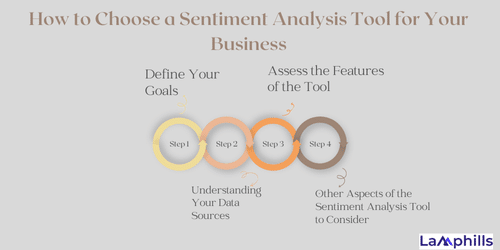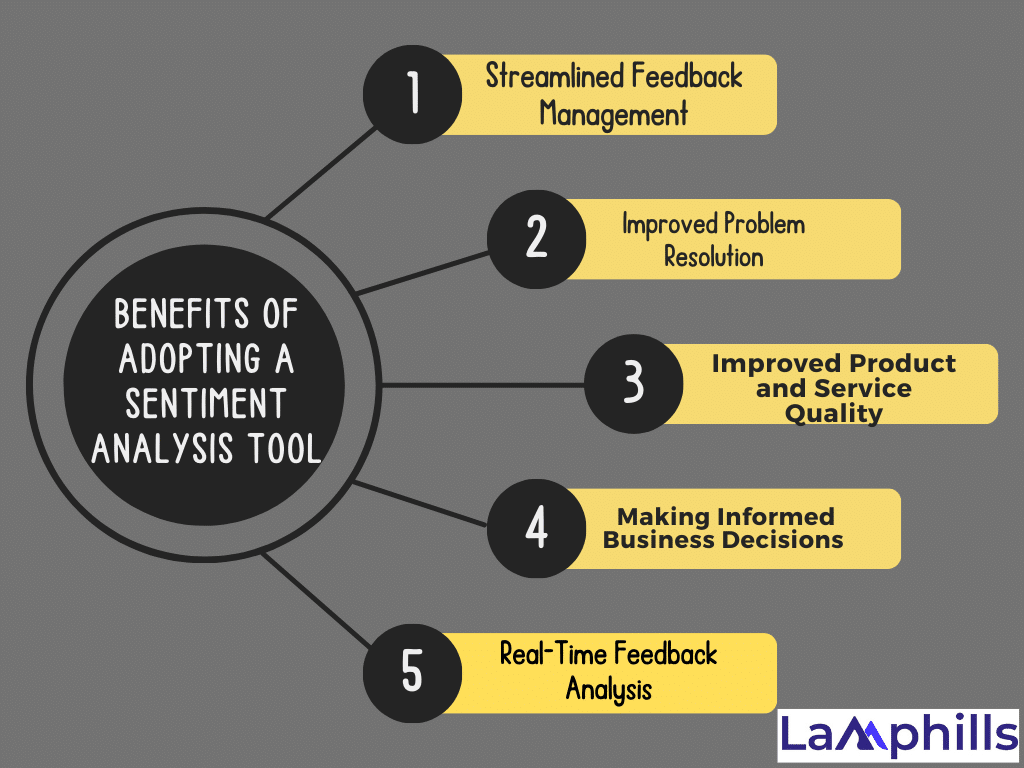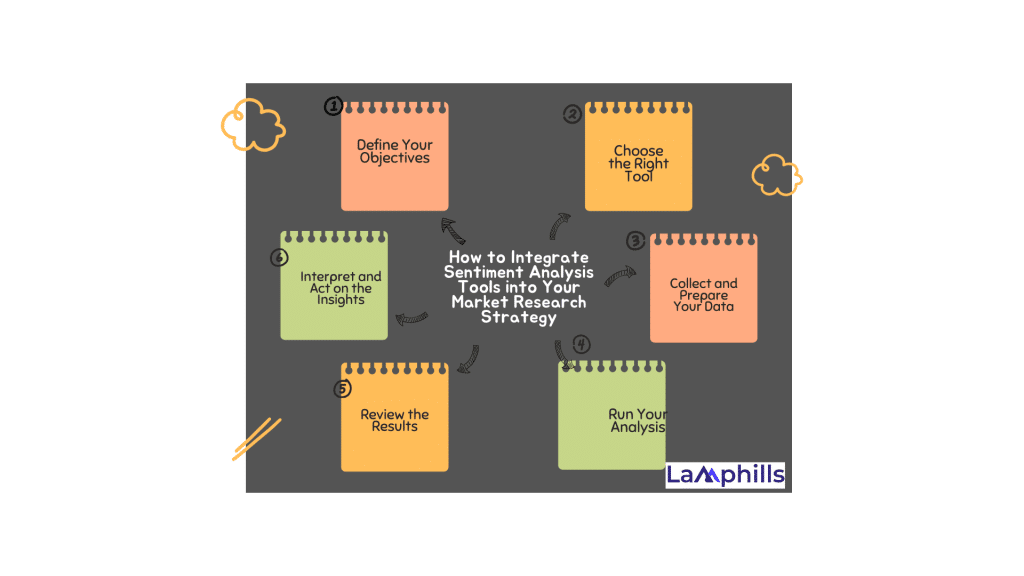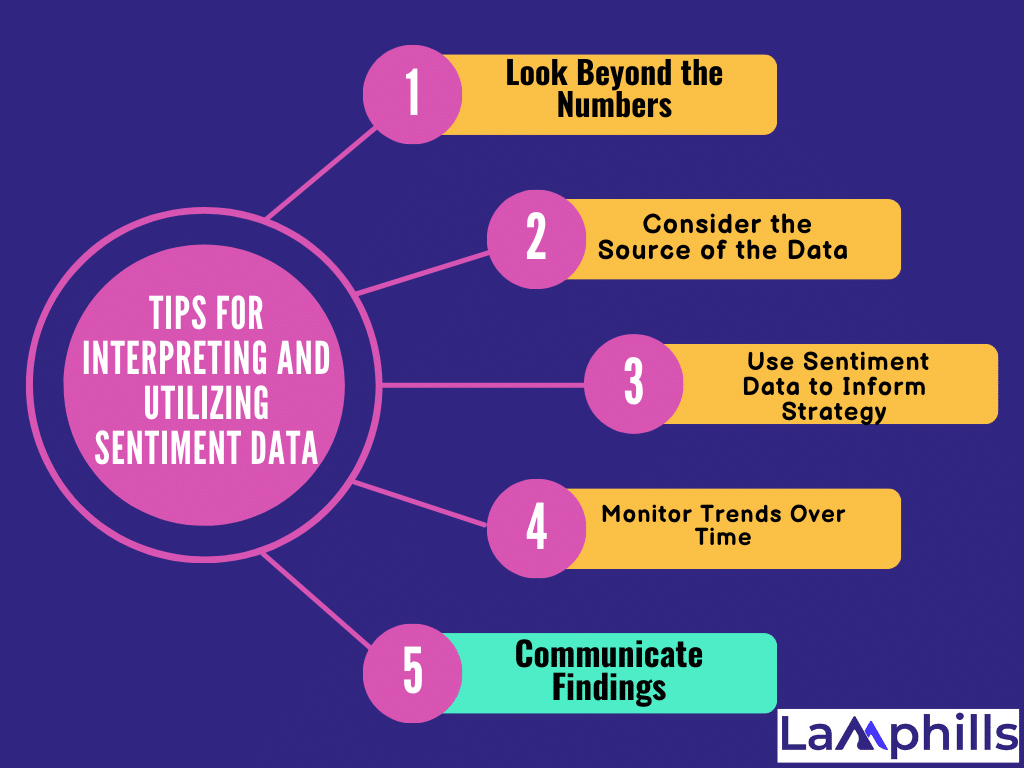Yes, feedback, reviews, likes, and mentions convey a story. But what about the faint whispers of displeasure, the disappointment hidden behind abandoned carts, or the slow clicks indicating indecision? These are the voices that are frequently overlooked, and the feelings that go unread.
Sentiment analysis tools help you cut through the noise, listen to the customer’s emotions, and get to the heart of the customer experience, revealing the unspoken emotions concealed in text data. This is because sentiment analysis insights provide a lot of information for customer support teams, product development, and marketing. Now, let me walk you through some of the greatest free sentiment analysis tools.
Key Takeaways
- Sentiment analysis tools are crucial for understanding the subtle emotional undertones of customer feedback. They can detect dissatisfaction, disappointment, or indecision that might not be obvious from surface-level data.
- Automating sentiment analysis helps businesses manage large volumes of data efficiently. Instead of manually sifting through hundreds of reviews or social media comments, sentiment analysis tools can quickly categorize feedback into positive, negative, or neutral.
- The ability to analyze customer feedback in real time is a game-changer. It allows businesses to address concerns as they arise, rather than waiting days or weeks.
- Selecting a sentiment analysis tool that aligns with your specific goals and data sources is essential. Whether you need basic sentiment tracking or advanced features like emotion detection and real-time monitoring, the right tool can provide valuable insights tailored to your business needs.
- While sentiment analysis tools provide quantitative data, understanding the context behind the numbers is crucial. Factors like the source of the data and specific feedback nuances can impact interpretation.
What is Sentiment Analysis?
Assume you’ve recently introduced a new product and are keen to see how customers react. Instead of going through hundreds of evaluations one by one, sentiment analysis acts like a super-intelligent assistant. It is designed to detect the emotional tone of the text, whether good, negative, or neutral.
I’ll never forget the first time I applied sentiment analysis to my blog. I was wondering how my readers reacted to a series of blogs I’d published. The tool’s analysis was eye-opening: while users liked the material, many were dissatisfied with the site’s load time. This was a game changer for me, indicating an area for improvement that I had not previously explored.
This software uses a preprogrammed algorithm to evaluate text or audio. Sentiment analysis tools use Natural Language Processing (NLP) to detect whether text is positive, negative, or neutral. Some sentiment analysis techniques go beyond that, assigning more nuanced sentiment markers like disappointment, enthusiasm, or contempt to a piece of text.
Understanding What Sentiment Analysis Tools Are

A sentiment analysis tool is software that examines text exchanges to determine the tone, intent, and emotion behind each communication. By delving deeper into these components, the technology extracts additional insight from your chats and assists your customer service team in effectively analyzing comments. This is especially important for firms that constantly communicate with their customers via social media, live chat, and email, where it can be difficult to detect the sentiment behind a remark.
Nowadays, businesses must cope with a flood of communication from their brand’s target demographic, customers, industry analysts, mass media, and others. Staying up to date on all thoughts on your brand, goods, and related issues is critical to your company’s success.
But how can you manage such a large amount of text data without being bogged down in social media postings, articles, messages, emails, and other client communication? The solution is data analysis! When processing data from present and future customers, one of the first things a business should consider is the message’s sentiment. Using free sentiment analysis tools can make this procedure more effective while remaining within your budget.
Whether you’re dealing with a consumer request or trying to study your brand reputation in the media, sentiment analysis lets you select important signals and obtain the full picture of your reputation online.
How to Choose a Sentiment Analysis Tool for Your Business

Choosing a sentiment analysis tool involves considering the things it has to offer and ensuring that it aligns with your business goals. So, the first thing that you need to do is to,
#1. Define Your Goals
Define your sentiment analysis objectives clearly. Do you want to track social media, customer feedback, or internal communications? Do you want to put up a social media approval process? Understanding your objectives will direct your tool choices.
#2. Understanding Your Data Sources
Determine which data sources you intend to analyze. Different tools may be focused on social media, client evaluations, polls, or internal communication channels. Make sure the tool can handle the data types that are important to your organization.
#3. Assess the Features of the Tool
Here are some key features of AI sentiment analysis tools that you can look out:
- Automatic Sentiment Classification:
- Emotion Detection
- Topic and Theme Analysis:
- Real-time Monitoring
- Advanced Analytics:
#4. Other Aspects of the Sentiment Analysis Tool to Consider
Apart from the features, there are various factors of any product that should be considered before choosing it for your business.
Here are some of the factors:
- Customization and Flexibility: Choose a tool that allows you to customize the sentiment analysis model based on your industry or specific requirements.
- Ease of Integration: Check how easily the tool can be integrated into your existing systems. A seamless integration process will save time and resources.
- Multilingual Support: If your business operates in multiple languages, choose a sentiment analysis tool that supports the languages relevant to your audience.
- Scalability: Will the tool handle your current data volume and cater to future growth?
- User-Friendly Interface: Look for tools with intuitive dashboards and clear visualizations.
- Compliance and Security: Ensure that the sentiment analysis tool complies with data protection regulations and offers robust security features.
Benefits of Adopting a Sentiment Analysis Tool

Want to dive deeper into the benefits of utilizing a brand sentiment analyzer? Here I’ll walk you through the five most critical reasons brands consider sentiment analysis worthwhile.
#1. Streamlined Feedback Management
If your firm offers an omnichannel experience, a sentiment analysis tool can help your team organize and report on client input more efficiently. With the help of a sentiment analyzer, your staff will not have to spend time gathering input. Instead, it will be centralized in a single, easily accessible location.
#2. Improved Problem Resolution
By automating the process of assessing client feedback, your customer care personnel may better respond to their consumers. Rather than looking through each tweet and remark individually, a sentiment analysis program automatically evaluates your comments as good, negative, or neutral. This allows you to handle issues before they escalate, which improves the entire customer experience.
#3. Improved Product and Service Quality
Understanding client feelings and pain areas allows you to tailor your products and services. This will allow you to improve quality while meeting your customers’ expectations.
For example, if your sentiment analysis tool regularly flags discussions of the same issue, you know it’s worth investigating further. Without the sentiment analyzer, you wouldn’t be able to put the puzzle pieces together as quickly.
#4. Making Informed Business Decisions
Many brand sentiment research solutions integrate your data and present it in charts or graphs that clearly show trends in client response. These insights assist you in making more educated business decisions and increase client happiness. Without sentiment analysis, it would be difficult to identify trends in your customer feedback — which is a large reason why using a tool is so important.
#5. Real-Time Feedback Analysis
Sentiment analysis technologies can assess consumer input in real-time, enabling for fast action and response to customer sentiment. You don’t have to wait days or weeks to find out what customers are saying about your firm; you can get this information right away.
One of my favorite elements of sentiment analysis is having access to this information as it becomes available (also known as in real-time). With things changing so quickly online, it’s important to receive information at the same rate.
Now that you understand what a sentiment analysis tool is and how it can help your business, let’s have a look at some of the top tools available in 2024.
Best free sentiment analysis tools
Sentiment analysis tools differ widely. Some of this software necessitates an understanding of fundamental programming ideas, although others are as simple to use as Google. The price may also vary based on the product, ranging from free sentiment analysis options to thousands of dollars worth of software. What you choose is determined by your objectives; sometimes free sentiment analysis tools are just as useful as premium alternatives.
In this article, I’ll go over many tools for all types of businesses, from startups to corporations, including free social media sentiment research tools. I’ll begin with tools that are simple to set up and can search for, collect, and evaluate. data on their own, and then move on to the tools that require some sort of integration or an external data import. The former are extremely user-friendly and can help you solve a wide range of marketing and business tasks. The latter will be useful if you’re looking to integrate sentiment analysis for all your communication channels at once. I’m sure you’ll be able to find something.
#1. Awario
Best for: audience analysis, market research, reputation management, and competitor analysis. You can try this software for free for seven days.
Awario is a web-based social listening platform that includes sentiment analysis among its many other features. Awario analyzes data from social media platforms (such as tweets, posts, and Reddit threads), forums, blogs, and webpages, and sentiment analysis is available as soon as you log in to the application. It can predict the sentiment of mentions in real-time.
You instruct Awario to collect web data by entering the keywords you want to monitor. They might be about your brand, product, competition, industry, or any other topic you want to look up online.
In the screenshot above you can see Awario’s sentiment analysis of the two major American parties. In addition, Awario does all sorts of real-time social listening and data analytics: it displays the volume and reach of mentions for your keywords, the words commonly used along with them, and breakdowns of the volume of keywords by language, source, location, and more.
#2. Talkwalker
Best for: brand and campaign monitoring, competitor analysis, and reputation management. You can get a free demo if you want to see Talkwalker in action. The prices start at $9,600 a year.
Talkwalker is another sentiment analysis tool that uses social media data. It use artificial intelligence to monitor and analyze the tone of individual online mentions sourced from major social media networks, blogs, and forums. It can even identify simple forms of sarcasm.
The application allows you to track consumer patterns and see which parts of your product attract clients and which turn them off. Similar to Awario, it provides certain competitor intelligence skills as well as other crucial web data indicators like engagement and demographics.
In addition to social mentions, I like how Talkwalker analyzes support requests and emails to uncover frequent customer issues and concerns. This capability is extremely handy for refining customers. support processes and align products more closely with customer expectations.
#3. Social Searcher
Best for: brand monitoring. The tool is free for up to 100 keyword requests. You can also buy Premium Monitoring starting at $4 a month.
Social Searcher is a free web-based tool for social media monitoring. When you arrive at the tool’s page, you are sent directly to the settings section, where you can enter your keyword. It then gathers data from 11 sources, including Twitter, Facebook, and the internet.
To view sentiment analysis for the gathered mentions, navigate to the Detailed Analytics page and select sentiment. The tool will display the percentage of positive, negative, and neutral mentions, as well as the positive-to-negative ratio. On the same page, you can view the sentiment ratio for each source as well as the most popular positive, negative, and neutral articles.
I was delighted with Social Searcher’s capacity to evaluate sentiment in different languages. and across various digital channels, which makes it an excellent tool for brands aiming to maintain a positive online reputation.
#4. Brandwatch
Best for: market and audience research. The price, as well as a free demo, are provided upon request.
I think one of the best features of Brandwatch is its “image insights” function, which can identify images connected with your business. Furthermore, Brandwatch’s program offers intriguing insights into each image it discovers. This covers indicators like mention volume, total followers, and most recent activity. With Brandwatch, your team can observe where your brand’s visuals appear and how they perform with your target demographic.
There’s a lot I like about Brandwatch, but my favorite feature is its consumer research, which provides fast access to the world’s largest collection of customer opinions.
In my opinion, nothing beats being able to base your decisions on actual numbers especially when in planning or crisis mode. After all, the last thing any of us wants to do is base a mission-critical strategy on hope and a gut feeling, and Brandwatch helps you make data-driven decisions.
#5. MonkeyLearn
Best for: market research, and target audience analysis. You can use the basic version of the tool for free. The paid version starts at $299 a month. With this sentiment analyzer, we progress from simple information collection tools to more complex sentiment analysis tools that require extra data input.
MonkeyLearn is a user-friendly sentiment analysis engine that connects to your preferred software (e.g., Excel, Google Sheets, Zapier, or Zendesk) and extracts text data to investigate. While their site still has a lot of data, I was unable to test MonkeyLearn or delve deeply into it, so future updates may see us remove it from the list.
What I like: I believe that having your data displayed in graphic form makes it easier to understand, hence MonkeyLearn’s quick data visualizations and detailed insights would be a major plus for me. Plus, I love good integration — and MonkeyLearn can connect seamlessly with apps and BI tools through native integrations, SQL connections, or APIs.
#6. Clarabridge
Best for: customer support, and customer feedback analysis. A free demo is available. The price is available on request.
Clarabridge is a platform for analyzing customer communication, including emails, chat sessions, and surveys. It employs grammatical and lexical concepts, as well as machine learning, to assess each sentence in the text and the sentiment of the text as a whole for a wide range of languages. It can also dissect audio data, which is useful in contact centers.
Because the application is primarily used as a Customer Experience management software, it includes several functions to help you better your contact with consumers. Clarabridge, for example, distinguishes between urgent and non-urgent inquiries and alerts you to the former.
#7. Lexalytics
Best for: data research. The tool offers free demos. The pricing is revealed upon request.
Lexalytics is another text analysis tool that can be used for a variety of business applications. It collects data from polls, social media comments, reviews, and other sources and uses natural language processing to determine if a piece of text is negative, positive, or neutral. The tool can be connected with other software via its Cloud API, or you can download it as an add-on to your Excel sheets. The program is totally adjustable, but adding your own tweaks will require some basic data analysis abilities.
#8. MeaningCloud
Best for: market research. You can try a free plan. Premium plans start at $100 a month. MeaningCloud is a good alternative if you need a tool with an API. The platform is focused to text analysis, assisting businesses and scholars in extracting meaning from enormous amounts of textual data. Its sentiment analysis API enables you to conduct multilingual sentiment analysis on texts from various sources.
In addition to determining if a sentence is positive, negative, or neutral, it can detect polarity and irony, distinguish between opinions and facts, and extract aspect-based sentiment. You can improve the accuracy of the results by including your own industry-specific dictionaries and analytic models.
#9. Realeyes
Best for: predicting the effectiveness of your campaigns. A free trial is available. To get the pricing, please contact the support.
Realeyes is an emotion AI platform, which means it is mostly focused on sentiment analysis. It analyzes mentions in a variety of ways, including interpreting facial expressions via phone cameras or webcams, to provide commercial predictions based on the data.
The application allows you to test your marketing decisions, such as pitches, campaigns, and commercials, on a target group of 150 to 300 people. The feedback they provide is then examined by its AI, which classifies textual feedback as good, neutral, or negative, determines the sentiment score, and clusters comments based on sentiment. The tool provides a variety of languages to choose from.
#10. Dialpad
Best for: Real-time call analysis, customer support sentiment, and conversation analytics.
How to Integrate Sentiment Analysis Tools into Your Market Research Strategy

Integrating sentiment analysis tools into your market research strategy can feel like adding a superpower to your toolkit. It’s not just about gathering data; it’s about transforming that data into actionable insights. I remember when I first dipped my toes into sentiment analysis—I was excited but also a bit overwhelmed. Over time, I’ve learned a few tricks that made the process smoother and more effective. Let’s break it down step by step.
#1. Define Your Objectives
Before you begin using the tools, take time to identify your goals. Do you want to know how people feel about a new product? Or are you attempting to evaluate the overall sentiment against your brand? Setting defined objectives allows you to select the appropriate tool and adjust your strategy.
I learned this lesson the hard way. Early on, I began studying comments without a specific purpose in mind. The findings were fascinating, but not actionable. When I described what I wanted to know, such as specific pain points or general satisfaction, the data became considerably more useful.
#2. Choose the Right Tool
With your goals in mind, choose a sentiment analysis tool that meets your requirements. Consider the ease of use, accuracy, and compatibility with other tools you employ. For example, if you already use Google Workspace, Google Cloud Natural Language could be a suitable fit because of its seamless connection.
#3. Collect and Prepare Your Data
It is now time to collect the data for analysis. This could include customer reviews, social media mentions, or survey results. Make sure the data is clean and organized. For example, if you’re collecting social media mentions, make sure you’re including relevant hashtags or keywords to receive accurate results.
#4. Run Your Analysis
It’s time to execute the analysis now that you’ve prepared the data and set up your tool. Depending on the tool, this could entail uploading your data or integrating it through an API. To achieve accurate results, carefully follow the tool’s instructions.
#5: Review the Results
Once the analysis is completed, thoroughly evaluate the results. Examine the general sentiment and go into any areas that stick out. Are there any reoccurring themes or issues? Pay attention to any patterns that may provide deeper insights into client sentiment.
#6. Interpret and Act on the Insights
The final stage is to analyze the data and make decisions based on your findings. Use the information to make more educated judgments about your product, marketing strategy, or customer service. For example, if the study shows that customers are dissatisfied with a specific area of your service, you might consider making modifications to address their issues.
One of my most profound experiences occurred when I used sentiment analysis to improve a marketing campaign. The statistics revealed that our pitch resonated effectively with one demographic but fell flat with another. Adjusting our strategy based on these findings resulted in a big boost in engagement and conversions.
Tips for Interpreting and Utilizing Sentiment Data

Here are a few of the tips I use for interpreting and utilizing data
#1. Look Beyond the Numbers
Sentiment analysis gives useful information, but it is critical to go beyond the numbers. Recognize the context and nuance of the sentiment. For example, a strong favorable sentiment score may be complemented by specific feedback on areas that want improvement.
#2. Consider the Source of the Data
The source of your data can influence sentiment analysis. For example, feedback on social media may be more informal and include slang, whereas customer reviews on a website may be more structured. Adjust your interpretation according to the source.
#3: Use Sentiment Data to Inform Strategy
Leverage sentiment analysis information to inform your overall approach. Use statistics to inform your decisions, whether they are about changing product features, fine-tuning messages, or improving customer service.
For example, after discovering that customers were consistently unhappy with delivery times, we prioritized improving our logistics. This change not only addressed a key pain point but also led to higher overall satisfaction scores.
#4. Monitor Trends Over Time
Sentiment analysis is not a one-time exercise. To keep up with customer perceptions, monitor trends and sentiment changes regularly. This continuing analysis allows you to keep ahead of problems and always improve.
I’ve discovered that tracking sentiment over time provides useful insights into how changes in your business affect consumer impressions. It’s similar to having a pulse on your brand’s reputation, allowing you to make proactive changes.
#5. Communicate Findings
When presenting sentiment analysis findings to your team or stakeholders, keep the data simple and succinct. Visualizations like as charts and graphs can help make findings more accessible and actionable.
I’ve had success presenting sentiment data in team meetings with visual assistance. This strategy allows everyone to understand the essential points and agree on the next actions.
Trust me, integrating sentiment analysis tools into your market research strategy can transform the way you understand and respond to customer feedback. By following these steps and tips, you can effectively harness the power of sentiment analysis to make informed decisions and drive positive change.
Can chat GPT do sentiment analysis?
Tools like ChatGPT help simplify analyzing customer feedback. You can automate sentiment analysis and text mining with them,
Which method is best for sentiment analysis?
Hybrid systems combine rule-based and automatic methods to perform accurate sentiment analysis.
Which library to use for sentiment analysis?
The Natural Language Toolkit (NLTK) Library. It provides an easy-to-use interface for a wide range of tasks, including tokenization, stemming, lemmatization, parsing, and sentiment analysis.
What are the three types of sentiment analysis?
The three most popular types, emotion-based, fine-grained, and aspect-based sentiment analysis
Conclusion
Understanding client feedback is more important than ever as competition and customer expectations become more mature. With so many text-based client interactions flooding your organization each day, sentiment analysis tools have become a “must-have” for better understanding your customers. These technologies assist in deciphering the tone and intent behind each message, while also making it easy to adjust your plans based on true client feedback.
While data analysis is commonly regarded as dispassionate and rational, sentiment and feelings play an important role in it.
Overall, how you assess sentiment and derive value from it will differ tremendously based on your brand and objectives. However, I would want to underline that if you are getting a lot of content from your existing and potential customers, analyzing the sentiment of these messages is extremely important.
There are more than 10 best sentiment analysis tools and each one of these services has its unique advantages and special features. Most of them offer either free trials or free versions, so if you’re interested, don’t hesitate to give them a try!






